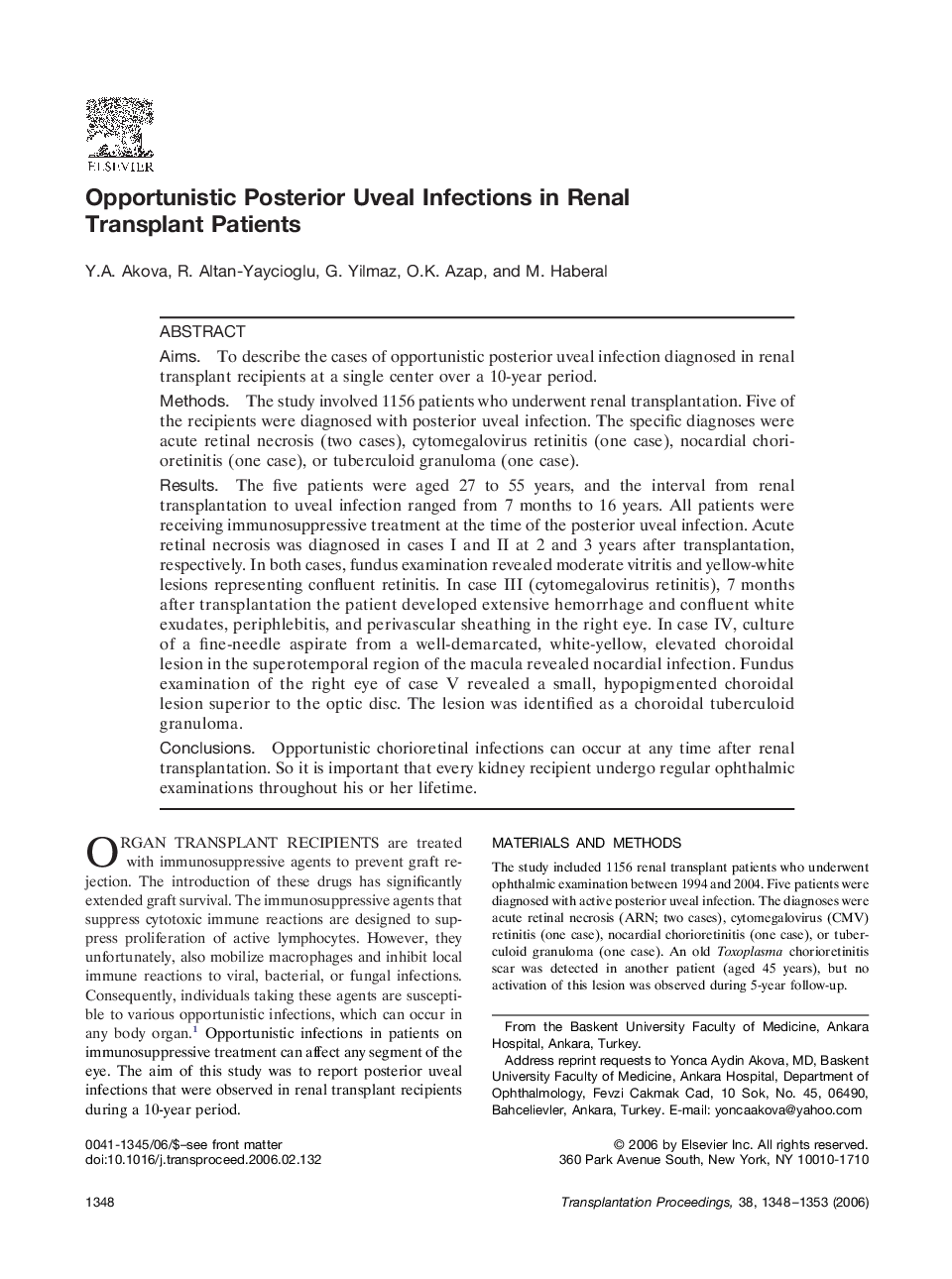| Article ID | Journal | Published Year | Pages | File Type |
|---|---|---|---|---|
| 4263433 | Transplantation Proceedings | 2006 | 6 Pages |
AimsTo describe the cases of opportunistic posterior uveal infection diagnosed in renal transplant recipients at a single center over a 10-year period.MethodsThe study involved 1156 patients who underwent renal transplantation. Five of the recipients were diagnosed with posterior uveal infection. The specific diagnoses were acute retinal necrosis (two cases), cytomegalovirus retinitis (one case), nocardial chorioretinitis (one case), or tuberculoid granuloma (one case).ResultsThe five patients were aged 27 to 55 years, and the interval from renal transplantation to uveal infection ranged from 7 months to 16 years. All patients were receiving immunosuppressive treatment at the time of the posterior uveal infection. Acute retinal necrosis was diagnosed in cases I and II at 2 and 3 years after transplantation, respectively. In both cases, fundus examination revealed moderate vitritis and yellow-white lesions representing confluent retinitis. In case III (cytomegalovirus retinitis), 7 months after transplantation the patient developed extensive hemorrhage and confluent white exudates, periphlebitis, and perivascular sheathing in the right eye. In case IV, culture of a fine-needle aspirate from a well-demarcated, white-yellow, elevated choroidal lesion in the superotemporal region of the macula revealed nocardial infection. Fundus examination of the right eye of case V revealed a small, hypopigmented choroidal lesion superior to the optic disc. The lesion was identified as a choroidal tuberculoid granuloma.ConclusionsOpportunistic chorioretinal infections can occur at any time after renal transplantation. So it is important that every kidney recipient undergo regular ophthalmic examinations throughout his or her lifetime.
